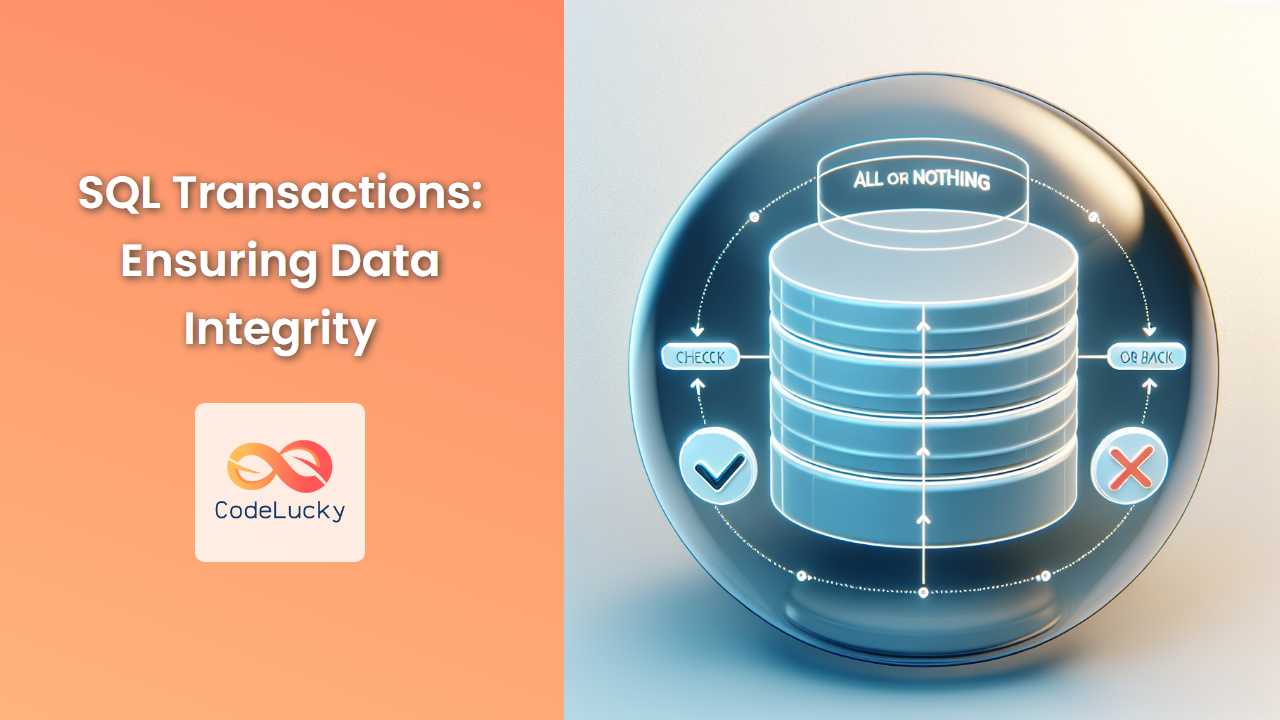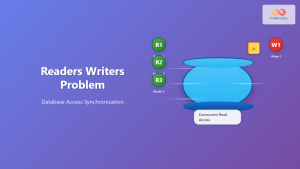In the world of database management, maintaining data integrity is paramount. SQL transactions play a crucial role in this process, providing a mechanism to ensure that database operations are executed reliably and consistently. In this comprehensive guide, we'll dive deep into SQL transactions, exploring their importance, how they work, and how to implement them effectively.
What are SQL Transactions?
SQL transactions are logical units of work that consist of one or more SQL statements. These statements are executed as a single, indivisible operation, ensuring that either all of them complete successfully or none of them take effect. This all-or-nothing approach is fundamental to maintaining data consistency and integrity in database systems.
🔑 Key Point: Transactions adhere to the ACID properties: Atomicity, Consistency, Isolation, and Durability.
Let's break down these ACID properties:
- Atomicity: All operations in a transaction succeed or they all fail. There's no partial completion.
- Consistency: A transaction brings the database from one valid state to another.
- Isolation: Concurrent execution of transactions results in a state that would be obtained if they were executed sequentially.
- Durability: Once a transaction has been committed, it will remain so, even in the event of power loss, crashes, or errors.
Why Use Transactions?
Imagine a banking scenario where you're transferring money from one account to another. This operation involves two steps:
- Deduct money from the source account
- Add money to the destination account
Without transactions, if the system fails after step 1 but before step 2, you'd end up with inconsistent data – money would disappear from one account without appearing in the other. Transactions prevent such scenarios by ensuring that both steps either complete successfully or don't happen at all.
Basic Transaction Syntax
Here's the basic structure of a SQL transaction:
BEGIN TRANSACTION;
-- SQL statements go here
COMMIT;
-- or
ROLLBACK;
BEGIN TRANSACTION: Marks the starting point of the transaction.COMMIT: Saves all changes made during the transaction.ROLLBACK: Undoes all changes made during the transaction.
Let's look at a practical example:
-- Create a sample table
CREATE TABLE Accounts (
AccountID INT PRIMARY KEY,
Balance DECIMAL(10, 2)
);
-- Insert some sample data
INSERT INTO Accounts (AccountID, Balance) VALUES (1, 1000), (2, 500);
-- Begin the transaction
BEGIN TRANSACTION;
-- Attempt to transfer $200 from Account 1 to Account 2
UPDATE Accounts SET Balance = Balance - 200 WHERE AccountID = 1;
UPDATE Accounts SET Balance = Balance + 200 WHERE AccountID = 2;
-- Check if Account 1 has sufficient balance
IF (SELECT Balance FROM Accounts WHERE AccountID = 1) >= 0
BEGIN
COMMIT;
PRINT 'Transaction successful';
END
ELSE
BEGIN
ROLLBACK;
PRINT 'Transaction failed: Insufficient funds';
END
In this example, we're transferring $200 from Account 1 to Account 2. If Account 1 has sufficient funds, the transaction commits. Otherwise, it rolls back, leaving the balances unchanged.
Savepoints in Transactions
Savepoints allow you to create checkpoints within a transaction. This gives you more granular control over which parts of a transaction to roll back.
Here's how you can use savepoints:
BEGIN TRANSACTION;
INSERT INTO Accounts (AccountID, Balance) VALUES (3, 750);
SAVE TRANSACTION SavePoint1;
UPDATE Accounts SET Balance = Balance - 100 WHERE AccountID = 3;
SAVE TRANSACTION SavePoint2;
-- Oops, we made a mistake. Let's roll back to SavePoint1
ROLLBACK TRANSACTION SavePoint1;
-- Now let's do the correct operation
UPDATE Accounts SET Balance = Balance + 100 WHERE AccountID = 3;
COMMIT;
In this example, we create two savepoints. We then roll back to the first savepoint, undoing the deduction of 100 from Account 3, and then perform the correct operation of adding 100.
Handling Errors in Transactions
Error handling is crucial in transactions. SQL Server provides the TRY…CATCH construct for this purpose:
BEGIN TRY
BEGIN TRANSACTION;
-- Attempt to insert a duplicate primary key
INSERT INTO Accounts (AccountID, Balance) VALUES (1, 2000);
COMMIT;
END TRY
BEGIN CATCH
ROLLBACK;
PRINT 'Error occurred: ' + ERROR_MESSAGE();
END CATCH
This code attempts to insert a duplicate primary key. Since this will cause an error, the transaction is rolled back, and an error message is printed.
Isolation Levels
Isolation levels determine how the transaction integrity is visible to other users and systems. SQL Server provides several isolation levels:
- READ UNCOMMITTED: Allows dirty reads, which means it can read uncommitted data from other transactions.
- READ COMMITTED: Prevents dirty reads but allows non-repeatable reads.
- REPEATABLE READ: Prevents dirty and non-repeatable reads but allows phantom reads.
- SERIALIZABLE: The highest isolation level, preventing dirty reads, non-repeatable reads, and phantom reads.
Here's how you can set the isolation level:
SET TRANSACTION ISOLATION LEVEL READ COMMITTED;
BEGIN TRANSACTION;
-- Your SQL statements here
COMMIT;
🔍 Note: Higher isolation levels provide more consistency but can impact performance due to increased locking.
Distributed Transactions
Distributed transactions involve multiple databases or servers. SQL Server uses the Microsoft Distributed Transaction Coordinator (MSDTC) to manage these transactions.
Here's a simple example of a distributed transaction:
BEGIN DISTRIBUTED TRANSACTION;
-- Operation on Server1
INSERT INTO Server1.Database1.dbo.Table1 (Column1) VALUES ('Value1');
-- Operation on Server2
UPDATE Server2.Database2.dbo.Table2 SET Column2 = 'Value2' WHERE ID = 1;
COMMIT TRANSACTION;
This transaction ensures that both operations (the insert on Server1 and the update on Server2) either both succeed or both fail.
Best Practices for Using Transactions
-
Keep transactions short: Long-running transactions can lead to performance issues and deadlocks.
-
Use appropriate isolation levels: Choose the isolation level that provides the necessary consistency without overly impacting performance.
-
Handle errors properly: Always include error handling to ensure your database remains in a consistent state.
-
Be mindful of locks: Transactions can hold locks on resources, potentially blocking other operations.
-
Use transactions judiciously: Not every operation needs to be in a transaction. Use them when you need to ensure the atomicity of multiple operations.
Conclusion
SQL transactions are a powerful tool for maintaining data integrity in your database. By ensuring that related operations are executed as a single unit of work, transactions help prevent data inconsistencies and provide a mechanism for rolling back changes if something goes wrong.
From basic transaction syntax to advanced concepts like savepoints and distributed transactions, mastering SQL transactions is crucial for any database developer or administrator. By following best practices and understanding the intricacies of transactions, you can build robust, reliable database systems that maintain data integrity even in complex scenarios.
Remember, while transactions provide strong guarantees, they should be used judiciously. Overuse can lead to performance issues, so always consider the specific requirements of your application when deciding whether and how to use transactions.
With this knowledge, you're well-equipped to leverage the power of SQL transactions in your database projects. Happy coding!



















